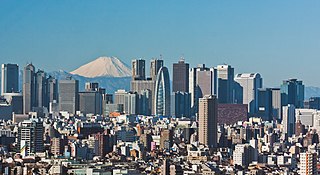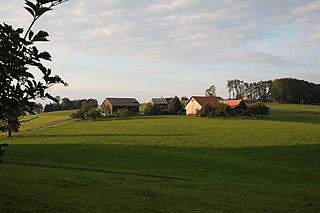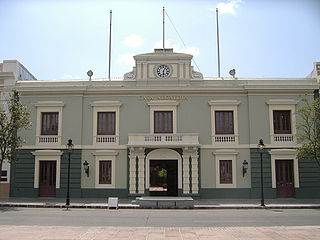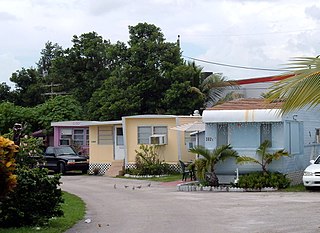 W
WA borough is an administrative division in various English-speaking countries. In principle, the term borough designates a self-governing walled town, although in practice, official use of the term varies widely.
 W
WA city is a large human settlement. It can be defined as a permanent and densely settled place with administratively defined boundaries whose members work primarily on non-agricultural tasks. Cities generally have extensive systems for housing, transportation, sanitation, utilities, land use, and communication. Their density facilitates interaction between people, government organisations and businesses, sometimes benefiting different parties in the process, such as improving efficiency of goods and service distribution. This concentration also can have significant negative consequences, such as forming urban heat islands, concentrating pollution, and stressing water supplies and other resources.
 W
WA conurbation is a region comprising a number of metropolises, cities, large towns, and other urban areas that, through population growth and physical expansion, have merged to form one continuous urban or industrially developed area. In most cases, a conurbation is a polycentric urbanised area, in which transportation has developed to link areas to create a single urban labour market or travel to work area.
 W
WDhani or Thok is a type of hamlet, the smallest conglomeration of houses, in sandy Bagar region of northwestern states of Rajasthan, Haryana and Punjab in India. Per Census of India, 70% of Indians live in villages. 80% of the villages have a population of less than 1000 people and each consists of a cluster of hamlets. Most dhanis are nucleated settlements, while others are more dispersed. A dhani could be as small as one isolated house for a single family or a small cluster of several houses which could grow in number with successive generations, and even become a village by itself. All families living in a dhani are relatives or at least are of the same caste. An isolated collection of several of dhanis, which could be few hundred meters apart, constitutes a gram panchayat village community. A typical dhani in the arid zone of Rajasthan is a cluster of huts with a boundary made of dried shrubs around it and with owners' livestock such as goats, sheep and camels inside the bara. Dhani are atypically mud huts in Rajasthan. Houses in dani nowadays are made of modern brick and mortar, specially in affluent higher-per-capita-income states of Haryana and Punjab, and some richer families of Rajasthan.
 W
WDror-Israel is a pioneering educational movement whose mission is to effect meaningful, long-term educational and social change in Israeli society in order to promote solidarity, social activism, democracy and equality. Dror-Israel aims to form the grassroots nucleus of an exemplary society in Israel based on the vision of the prophets of Israel and the founders of Zionism.
 W
WThis is a list of common atlas and gazetteer abbreviations. These abbreviations are not always used consistently between publications; some terms have fallen out of use over time. Older gazetteers and atlases often neglect to define abbreviations and underlying terms. Gazetteer and map abbreviations can show up in several forms: upper or lower case, with or without periods, sometimes with hyphens.
 W
WA halting site is purpose-built residential accommodation for Travellers provided by a local municipal authority. The halting site has an individual bay for each family unit with a full range of services provided in a small structure on each bay.
 W
WA hamlet is a small human settlement. In different jurisdictions and geographies, a hamlet may be the size of a town, village or parish, or may be considered to be a smaller settlement or subdivision or satellite entity to a larger settlement. The word and concept of a hamlet have roots in the Anglo-Norman settlement of England, where the old French hamlet came to apply to small human settlements. In British geography, a hamlet is considered smaller than a village and distinctly without a church or other place of worship.
 W
WInner suburb is a term used for a variety of suburban communities that are generally located very close to the centre of a large city. Their urban density is lower than the inner city or central business district but higher than that of the city's outer suburbs or exurbs.
 W
WA kibbutz is a collective community in Israel that was traditionally based on agriculture. The first kibbutz, established in 1909, was Degania. Today, farming has been partly supplanted by other economic branches, including industrial plants and high-tech enterprises. Kibbutzim began as utopian communities, a combination of socialism and Zionism. In recent decades, some kibbutzim have been privatized and changes have been made in the communal lifestyle. A member of a kibbutz is called a kibbutznik.
 W
WA linear settlement is a settlement or group of buildings that is formed in a long line. Many of such settlements have transport route, such as a road, river, or canal though some form due to physical restrictions, such as coastlines, mountains, hills or valleys. Linear settlements may have no obvious centre, such as a road junction. Linear settlements have a long and narrow shape.
 W
WLischke was a type of Old Prussian settlement. Lischkes were spontaneously grown settlements in geographically strategic places, so that often they have grown into towns. Often they grew under the protection of castles. The population was mainly innkeepers, craftsmen and merchants.
 W
WA manor is the basic unit of manorialism, which became the dominant economic system during parts of the European Middle Ages. It defined the relationship between the lord of the manor, and serfs and free peasants who worked various plots of land. In English law, Welsh law and Irish law, the lord held an estate in land which included the right to hold a manorial court. The court had jurisdiction over most of those who lived within the lands of the manor.
 W
WA municipality is usually a single administrative division having corporate status and powers of self-government or jurisdiction as granted by national and regional laws to which it is subordinate. It is to be distinguished (usually) from the county, which may encompass rural territory or numerous small communities such as towns, villages and hamlets.
 W
WA neighbourhood or neighborhood is a geographically localised community within a larger city, town, suburb or rural area. Neighbourhoods are often social communities with considerable face-to-face interaction among members. Researchers have not agreed on an exact definition, but the following may serve as a starting point: "Neighbourhood is generally defined spatially as a specific geographic area and functionally as a set of social networks. Neighbourhoods, then, are the spatial units in which face-to-face social interactions occur—the personal settings and situations where residents seek to realise common values, socialise youth, and maintain effective social control."
 W
WAn outport is the term given for a small coastal community in the Canadian province of Newfoundland and Labrador other than the chief port of St. John's. Originally, the term was used for coastal communities on the island of Newfoundland, but the term has now been adopted for those on the mainland area of Labrador as well.
 W
WA posad was a settlement in the Russian Empire, often surrounded by ramparts and a moat, adjoining a town or a kremlin, but outside of it, or adjoining a monastery in the 10th to 15th centuries. The posad was inhabited by craftsmen and merchants and was its own distinct community, separate from the city it adjoined. Some posads developed into towns, such as Pavlovsky Posad and Sergiev Posad.
 W
WA registration district is, since 1 January 2016, the smallest administrative subdivision for population registration in Sweden, i.e. the civil registration of births, marriages, civil partnerships and deaths, and for the collation of census information.
 W
WA sloboda was a kind of settlement in the history of the Old Russian regions Povolzhye, Central Russia, Belarus and Ukraine. The name is derived from the early Slavic word for "freedom" and may be loosely translated as "(tax-)free settlement". In modern Russia, the term is used to denote a type of a rural locality in Kursk, Lipetsk, Nizhny Novgorod, Oryol, Rostov, Ryazan, Tula, and Voronezh Oblasts.
 W
WSocken is the name used for a part of a county in Sweden. In Denmark similar areas are known as sogn, in Norway sorn or sokn and in Finland pitäjä/socken. A socken is a country-side area that was formed around a church, typically in the Middle Ages. A socken originally served as a parish. Later it also served as a civil parish or an administrative parish, and became a predecessor to today's municipalities of Sweden, Finland, Norway and Denmark. Today it is a traditional area with frozen borders, in Sweden typically identical to those of the early 20th century country-side parishes. The socken also served as a registration unit for buildings, in Sweden recently replaced by identical districts as registration unit. A socken consists of several villages and industry localities, and is typically named after the main village and the original church.
 W
WA suburb is a mixed-use or residential area, existing either as part of a city or urban area or as a separate residential community within commuting distance of a city. Suburbs might have their own political jurisdiction, especially in the United States, but this is not always the case, especially in the United Kingdom where most suburbs are located within the administrative boundaries of cities. In most English-speaking countries, suburban areas are defined in contrast to central or inner-city areas, but in Australian English and South African English, suburb has become largely synonymous with what is called a "neighborhood" in other countries and the term extends to inner-city areas. In some areas, such as Australia, India, China, New Zealand, the United Kingdom, and parts of the United States and Canada, new suburbs are routinely annexed by adjacent cities. In others, such as Morocco, France, and much of the United States and Canada, many suburbs remain separate municipalities or are governed as part of a larger local government area such as a county. In the United States, beyond the suburbs are exurbs, or "exurban areas", with less density but linked to the metropolitan area economically and by commuters.
 W
WA town is a human settlement. Towns are generally larger than villages but smaller than cities, though the criteria to distinguish them vary considerably between different parts of the world.
 W
WA trailer park or caravan park is a temporary or permanent area for mobile homes and travel trailers. Advantages include low cost compared to other housing, and quick and easy moving to a new area, for example when taking a job in a distant place while keeping the same home.
 W
WA village is a clustered human settlement or community, larger than a hamlet but smaller than a town, with a population typically ranging from a few hundred to a few thousand. Though villages are often located in rural areas, the term urban village is also applied to certain urban neighborhoods. Villages are normally permanent, with fixed dwellings; however, transient villages can occur. Further, the dwellings of a village are fairly close to one another, not scattered broadly over the landscape, as a dispersed settlement.